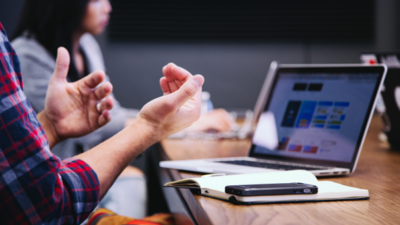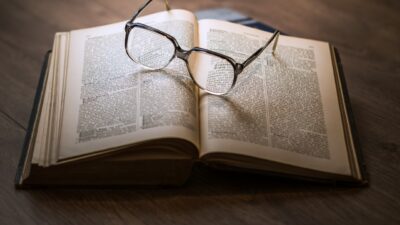Reaction to and prevention of Holocaust distortion
Objectives:
- To reflect upon the importance of contributing to countering Holocaust distortion
- To discuss concrete actions that can be taken to react to Holocaust distortion or to prevent it
Number of participants: 5–30
Duration: 90 minutes
Description of the activity:
- The trainer explains to the participants that in this session they will address not only the responsibility of reacting to and preventing Holocaust distortion, but also concrete ways of doing it. Firstly, they are going to watch a couple of short videos and afterwards, they will discuss a few case studies.
- In the two short videos (one-minute each), two Holocaust survivors share their perspectives on dealing with distortion and denial.
- Video 1: Allan Brown – Do not ignore, but react
- Video 2: Nina Kaleska – Do not give them a platform
- Video 1: Allan Brown – Do not ignore, but react
- Whenever playing videos of Holocaust survivors, it is important to give participants a short bio of the person, even if (or especially if) the video covers only a small part of the testimony. This serves as a way to remember and honor, as well as to avoid using testimonies without proper contextualization. Here are short bios of the two speakers, that can be shared with the participants:
Alan A. Brown (Braun) was born in 1928 in Miskolc, Hungary. At 16, he was sent to a coal mine in Kosice with his father. Together they were deported to a camp in Sopron, to Feldbach labor camps in Austria and finally to Neuhaus. His father died in April 1945, one day after the camp was liberated. All of his relatives were killed in concentration camps. He emigrated to the United States and, after a while, settled in Windsor, Canada.
Nina Kaleska was born on April 11, 1929 in Grodno, Poland (now Belarus). She was deported with her sister to Auschwitz in 1941. Her sister died three months after they arrived. Nina became sick in the camp several times and was able to overcome this with the help of a woman named Martha, who worked there. She was forced to go on a death march and was eventually liberated by Allied Forces on May 5, 1945. She emigrated first to England and then to the United States with the help of the American Joint Distribution Committee.
- The trainer engages the participants in a discussion based on the two videos by asking them to share:
- Of the two perspectives, which one resonates with you more? Why?
- Brown said that he found it very difficult to talk about what happened to him, but the discussion with the student made him willing to start doing it, even if it was hard for him. What do you think made him change his mind?
- Why do you think that Ms. Kaleska considers we should not engage with people who deny the Holocaust, in order to not give them a platform? Do you think she would say the same thing about people who distort the Holocaust? Why? Why not?
- The trainer explains that:
- not giving people a platform to express antisemitism and Holocaust denial goes beyond refusing to engage with them. It also entails a responsibility to limit the spread of their message and to empower young people to counter it.
- countering Holocaust distortion requires both the work to prevent it from manifesting and to react when it does manifest. The two videos show how people reacted when they were faced with deniers. However, an important component of addressing Holocaust denial and distortion is prevention.
- Each participant is invited to think about the distinction between reaction to and prevention of Holocaust distortion by using the template in Annex 1. After the participants reflect individually, the trainer invites a few volunteers to share what they wrote. After the first participant shares his/her/their reflection, the following participants should only add (or contradict, if the case) but not repeat what was already said. The trainer asks the participants the following question:
- Can you think of some situations in which both preventative and reactive measure are needed?
- Why do you think both measures are needed in these situations?
- The trainer informs the participants that they are going to discuss a few case studies, to further reflect upon concrete measures that can be taken as reaction to or prevention of Holocaust distortion. The participants are asked to work in groups of 4–5 people. Each group receives a case study to analyze based on the following questions:
- Why do you think the people in this scenario have distorted the Holocaust and/or the Roma genocide?
- Why do you think the other people in the scenario behaved the way they did?
- What is, in your opinion, the best course of action in this situation? Who is best placed to respond – those in the immediate context of the incident, other people in school or outside of school, or a combination of all these?
- What opportunities are presented by the incident? In addition to risks that may need to be addressed urgently, the incident may create opportunities to have a positive impact through longer-term educational responses.
- What kind of preventative measures would you take to ensure this situation does not happen again/does not escalate?
- Each group presents. First, they read out loud the case study, for the other participants, then they share their reflection.
- After all the groups present, the trainer engages the participants in a debriefing discussion based on the following questions:
- How was it for you to analyze concrete cases of Holocaust distortion and to think of possible measures to take?
- To what extent are such incidents present in your school/organization/community?
- Was there anything surprising for you in the presentations of the other groups?
- Why are, in general, some people more willing/able to react?
- Why is teaching the truth about the Holocaust important even if the context in which we live does not encourage it?
- The trainer emphasizes the importance of discussing with young people when they engage in Holocaust distortion and asking them questions to understand where its coming from, what sources of information they use, what groups they identify with, whether they are ignorant or harbor strong antisemitic and antidemocratic beliefs, etc. Finding answers to all these questions is an important source of information for educators in order to develop meaningful intervention and prevention processes. Moreover, such a discussion can indicate exposure to or involvement in extremist activities. If this is the case, it is better to address the problem early on to prevent any further escalation such as violent behavior. Working in collaboration with other educators, psychologists and specialists in violent extremism is advisable, rather than trying to solve such a problem alone. As manifestations of Holocaust distortion can and do appear at unpredictable moments in teaching, educators need to respond to these incidents in a way that simultaneously manages four demands:
- The response must protect any potential victim(s);
- The response should not belittle or insult the individual for the views they hold. This is related to the rights of the child and to the fact that the teacher and learner will, in all probability, need to work together in the future;
- The response should defuse any conflict that may arise over a comment, while leaving space to revisit the issue at a later date; and
- The response should not interfere with the educational process. It should not be allowed to completely sidetrack the educational process and detract from the other learners’ right to an education.
Materials
lesson plan
Training Outline
worksheet
Annex 1
reading
Annex 2 – Case Studies
On this Topic
Lessons for
Topic
Number of participants:
Average Duration of Lesson:

